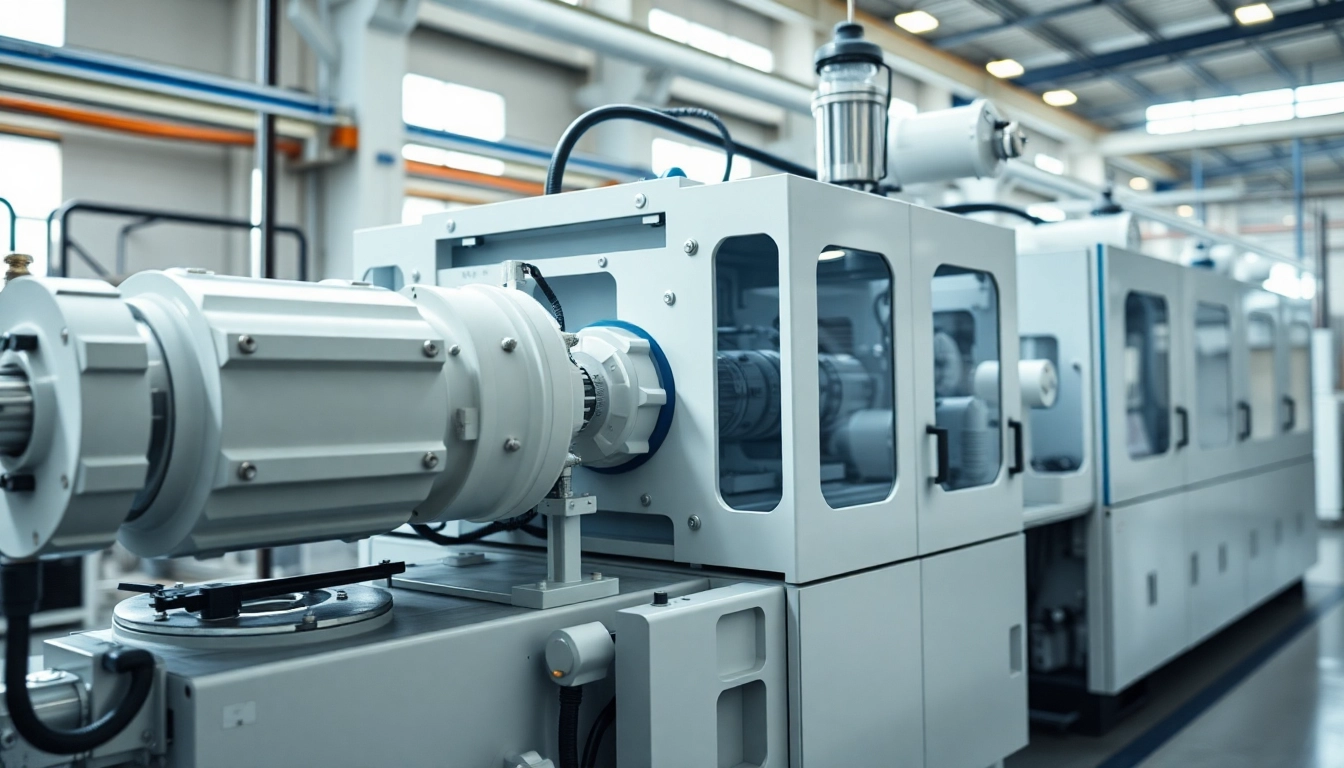1. Introduction to Injection Molded Parts
What Are Injection Molded Parts?
Injection molded parts are components made through the injection molding process, a method where molten material, typically plastic, is injected into a precisely machined mold. This technique allows the production of complex shapes and designs with high precision and repeatability. The end products are commonly used in various applications, ranging from consumer goods to automotive and medical devices. The versatility and efficiency of injection molding have made it a go-to process in the manufacturing industry for creating durable and intricate parts.
The Importance of Injection Molding in Manufacturing
The injection molding process holds significant importance in modern manufacturing. It enables the production of parts at a scale that meets market demands while maintaining consistent quality. One of the critical factors is efficiency—once a mold is created, parts can be produced quickly, reducing labor costs and lead times. Additionally, injection molding allows for the use of various plastics and materials, contributing to product innovation and design flexibility. For a deeper understanding of injection molded parts and their applications, you can explore injection molded parts, which provide insights into their manufacturing processes.
Common Applications of Injection Molded Parts
Injection molded parts are ubiquitous across a variety of industries. Common applications include:
- Consumer Products: Items such as plastic containers, toys, and household appliances.
- Automotive: Components like dashboard panels, knobs, and exterior accessories.
- Medical Devices: Parts for syringes, inhalers, and various diagnostic tools.
- Electronics: Housings for phones, computers, and televisions.
2. The Injection Molding Process Explained
Step-by-Step Overview of Injection Molding
The injection molding process is systematic and involves several steps:
- Material Preparation: Resins are dried and mixed, ensuring they are ready to be processed.
- Injection: The heated and molten plastic is injected into the mold under high pressure.
- Cooling: The molten plastic cools and solidifies in the mold.
- Ejection: Once cooled, the mold opens, and ejector pins remove the finished product.
- Post-Processing: Parts may undergo secondary operations like trimming or painting.
Materials Used for Injection Molded Parts
A wide range of materials can be utilized in the injection molding process. The selection depends on the desired properties of the final product. Common materials include:
- Thermoplastics: Such as polypropylene, polyethylene, and polystyrene, known for their flexibility and durability.
- Thermosetting Plastics: Like epoxy resins that offer excellent heat resistance.
- Elastomers: Used for creating flexible parts like seals and gaskets.
Advantages of Using Injection Molding for Production
Injection molding presents numerous advantages for manufacturers:
- High Efficiency: Facilitates mass production, reducing cycle times and labor costs.
- Design Flexibility: Capable of producing complex geometries with high precision.
- Material Versatility: Enables the use of a variety of materials for specific applications.
- Reduced Waste: The process minimizes waste during production, making it more sustainable compared to traditional methods.
3. Design Considerations for Injection Molded Parts
Best Practices in Designing Molded Parts
Effective design is crucial for the success of injection molded parts. Best practices include:
- Draft Angles: Incorporate draft angles in the design to facilitate easy removal of parts from the mold.
- Uniform Wall Thickness: Aim for uniform wall thickness to reduce the risk of defects like warping.
- Minimize Complex Features: Design with simplicity in mind to enable efficient production.
Common Design Flaws to Avoid
Several common design flaws can lead to production challenges:
- Sharp Corners: Can lead to stress concentration; opt for radii instead.
- Inadequate Venting: Failing to allow gases to escape can cause defects such as voids or burns.
- Excessive Complexity: Overly complex designs can increase production difficulties and costs.
How Design Impacts Production Efficiency
The design of injection molded parts directly influences production efficiency. For example, optimizing designs to reduce cycle times can lead to higher throughput and lower operational costs. Furthermore, intuitive designs that minimize the need for fixtures and additional tooling can streamline the entire manufacturing process.
4. Quality Control in Injection Molded Parts Production
Testing and Inspection Methods
Ensuring that injection molded parts meet quality standards necessitates rigorous testing and inspection methods. Common practices include:
- Visual Inspection: Checking for obvious defects such as surface blemishes or incomplete fills.
- Dimensional Measurement: Using calipers and gauges to ensure that parts meet specified dimensions.
- Functional Testing: Performing tests to confirm mechanical properties are within acceptable limits.
Ensuring Consistency and Quality Standards
To maintain consistency, manufacturers often adhere to strict quality standards outlined in International Organization for Standardization (ISO) certifications. Implementing Statistical Process Control (SPC) allows for real-time monitoring of processes and helps in identifying variations that could lead to defects.
Addressing Common Defects in Molded Parts
Common defects in injection molded parts—such as sink marks, flash, or short shots—can be mitigated through proper design, process control, and by adjusting operating parameters such as temperature and pressure. Continuous training of personnel and reviewing past defects can also enhance quality outcomes.
5. The Future of Injection Molded Parts in Industry
Innovations in Injection Molding Technology
The future of injection molding is likely to be shaped by advancements in technology. Innovations such as 3D printing for mold making, improved materials, and smarter machinery that utilizes AI for better control are paving the way for more efficient practices. Furthermore, integration with the Internet of Things (IoT) can facilitate real-time monitoring and predictive maintenance.
Sustainable Practices in Plastic Injection Molding
The increasing demand for environmental responsibility has led to sustainable practices in injection molding. Using recycled plastics, reducing energy consumption, and implementing closed-loop systems are critical elements in making injection molding more sustainable. Furthermore, innovations such as bioplastics are gaining traction as viable alternatives.
The Role of Automation in Injection Molded Parts Production
Automation is transforming the landscape of injection molded parts production. Automated systems for material handling, part inspection, and quality control reduce human error and improve efficiency. Additionally, robotics can take over repetitive tasks, allowing skilled workers to focus on more complex aspects of production or maintenance.
